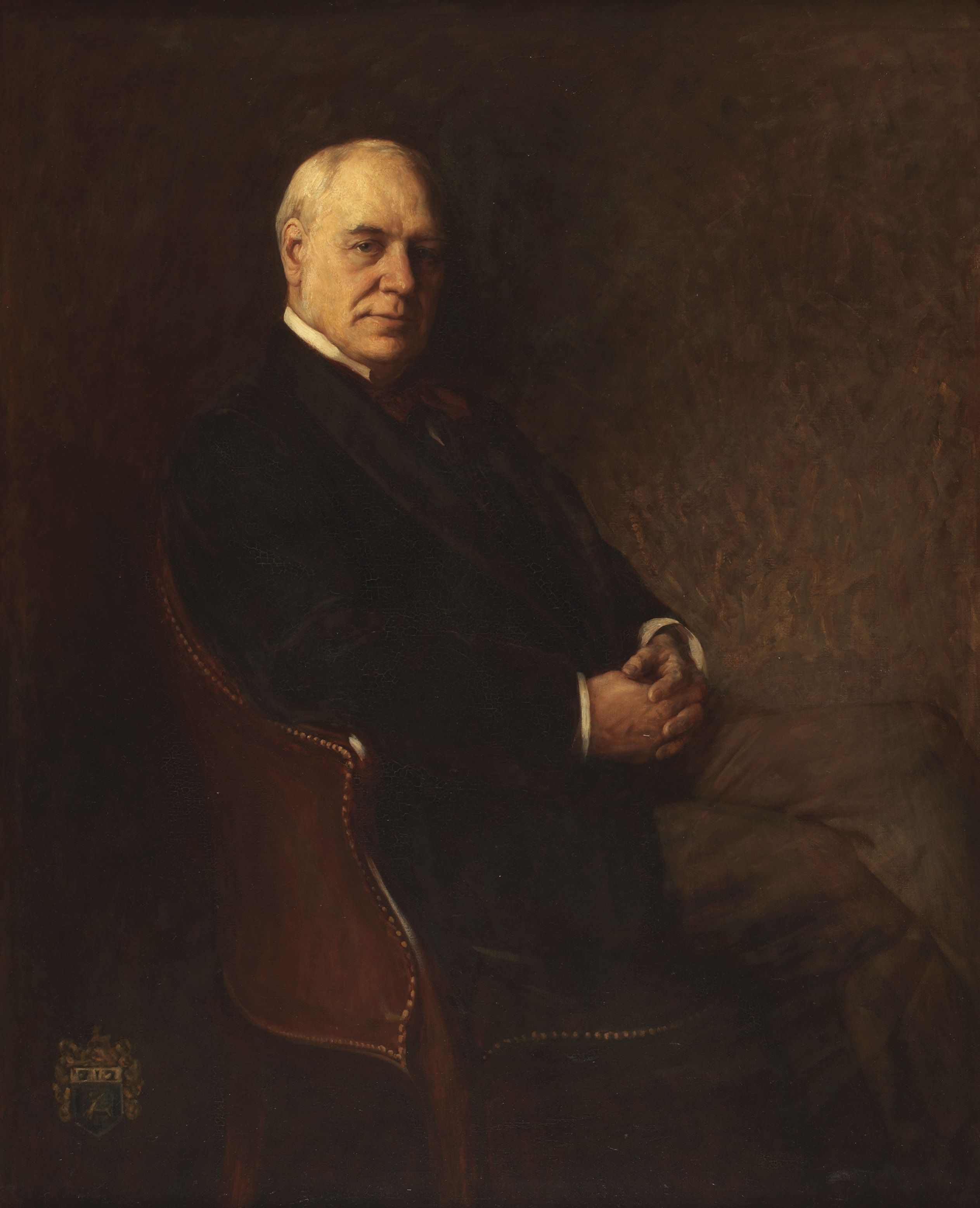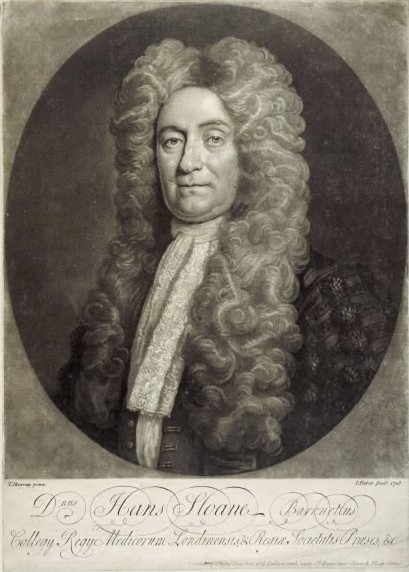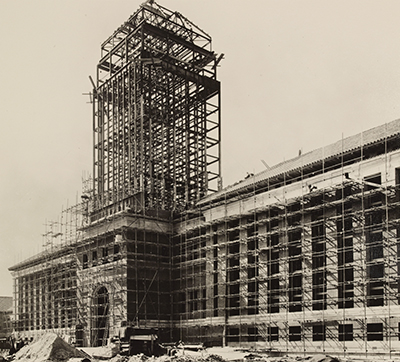|
National Library Of Wales
The National Library of Wales ( cy, Llyfrgell Genedlaethol Cymru), Aberystwyth, is the national legal deposit library of Wales and is one of the Welsh Government sponsored bodies. It is the biggest library in Wales, holding over 6.5 million books and periodicals, and the largest collections of archives, portraits, maps and photographic images in Wales. The Library is also home to the national collection of Welsh manuscripts, the National Screen and Sound Archive of Wales, and the most comprehensive collection of paintings and topographical prints in Wales. As the primary research library and archive in Wales and one of the largest research libraries in the United Kingdom, the National Library is a member of Research Libraries UK (RLUK) and the Consortium of European Research Libraries (CERL). At the very core of the National Library of Wales is the mission to collect and preserve materials related to Wales and Welsh life and those which can be utilised by the people of Wales fo ... [...More Info...] [...Related Items...] OR: [Wikipedia] [Google] [Baidu] |
National Library
A national library is a library established by a government as a country's preeminent repository of information. Unlike public library, public libraries, these rarely allow citizens to borrow books. Often, they include numerous rare, valuable, or significant works. A national library is that library which has the duty of collecting and preserving the literature of the nation within and outside the country. Thus, national libraries are those libraries whose community is the nation at large. Examples include the British Library, and the Bibliothèque nationale de France in Paris.Line, Maurice B.; Line, J. (2011). "Concluding notes". ''National libraries'', Aslib, pp. 317–318Lor, P. J.; Sonnekus, E. A. S. (2010)"Guidelines for Legislation for National Library Services", International Federation of Library Associations and Institutions, IFLA. Retrieved on 10 January 2010. There are wider definitions of a national library, putting less emphasis to the repository character. National ... [...More Info...] [...Related Items...] OR: [Wikipedia] [Google] [Baidu] |
David Lloyd George
David Lloyd George, 1st Earl Lloyd-George of Dwyfor, (17 January 1863 – 26 March 1945) was Prime Minister of the United Kingdom from 1916 to 1922. He was a Liberal Party politician from Wales, known for leading the United Kingdom during the First World War, social reform policies including the National Insurance Act 1911, his role in the Paris Peace Conference, and negotiating the establishment of the Irish Free State. Early in his career, he was known for the disestablishment of the Church of England in Wales and support of Welsh devolution. He was the last Liberal Party prime minister; the party fell into third party status shortly after the end of his premiership. Lloyd George was born on 17 January 1863 in Chorlton-on-Medlock, Manchester, to Welsh parents. From around three months of age he was raised in Pembrokeshire and Llanystumdwy, Caernarfonshire, speaking Welsh. His father, a schoolmaster, died in 1864, and David was raised by his mother and her shoemaker brot ... [...More Info...] [...Related Items...] OR: [Wikipedia] [Google] [Baidu] |
King George V
George V (George Frederick Ernest Albert; 3 June 1865 – 20 January 1936) was King of the United Kingdom and the British Dominions, and Emperor of India, from 6 May 1910 until his death in 1936. Born during the reign of his grandmother Queen Victoria, George was the second son of Albert Edward, Prince of Wales, and was third in the line of succession to the British throne behind his father and his elder brother, Prince Albert Victor. From 1877 to 1892, George served in the Royal Navy, until the unexpected death of his elder brother in early 1892 put him directly in line for the throne. On Victoria's death in 1901, George's father ascended the throne as Edward VII, and George was created Prince of Wales. He became king-emperor on his father's death in 1910. George's reign saw the rise of socialism, communism, fascism, Irish republicanism, and the Indian independence movement, all of which radically changed the political landscape of the British Empire, which itself reached ... [...More Info...] [...Related Items...] OR: [Wikipedia] [Google] [Baidu] |
NLW North Reading Room
{{disambig ...
NLW may refer to: * National League West * National Library of Wales * Newton-le-Willows railway station, England; National Rail station code NLW * Non-lethal weapon * Alias of a Dutch electronic music producer and Disc Jockey Afrojack Nick Leonardus van de Wall (; born 9 September 1987), better known as Afrojack, is a Dutch DJ, music producer and remixer from Spijkenisse, South Holland. In 2007, he founded the record label Wall Recordings; his debut album '' Forget the Worl ... [...More Info...] [...Related Items...] OR: [Wikipedia] [Google] [Baidu] |
Library Of Congress Classification
The Library of Congress Classification (LCC) is a system of library classification developed by the Library of Congress in the United States, which can be used for shelving books in a library. LCC is mainly used by large research and academic libraries, while most public libraries and small academic libraries used the Dewey Decimal Classification system. The classification was developed by James Hanson (chief of the Catalog Department), with assistance from Charles Martel, in 1897, while they were working at the Library of Congress. It was designed specifically for the purposes and collection of the Library of Congress to replace the fixed location system developed by Thomas Jefferson. LCC has been criticized for lacking a sound theoretical basis; many of the classification decisions were driven by the practical needs of that library rather than epistemological considerations. Although it divides subjects into broad categories, it is essentially enumerative in nature. That is, it p ... [...More Info...] [...Related Items...] OR: [Wikipedia] [Google] [Baidu] |
National Library Of Scotland
The National Library of Scotland (NLS) ( gd, Leabharlann Nàiseanta na h-Alba, sco, Naitional Leebrar o Scotland) is the legal deposit library of Scotland and is one of the country's National Collections. As one of the largest libraries in the United Kingdom, it is a member of Research Libraries UK (RLUK) and the Consortium of European Research Libraries (CERL). There are over 24 million items held at the Library in various formats including books, annotated manuscripts and first-drafts, postcards, photographs, and newspapers. The library is also home to Scotland's Moving Image Archive, a collection of over 46,000 videos and films. Notable items amongst the collection include copies of the Gutenberg Bible, Charles Darwin's letter with which he submitted the manuscript of ''On the Origin of Species,'' the First Folio of Shakespeare, the Glenriddell Manuscripts, and the last letter written by Mary Queen of Scots. It has the largest collection of Scottish Gaelic material of any ... [...More Info...] [...Related Items...] OR: [Wikipedia] [Google] [Baidu] |
Trinity College Library
The Library of Trinity College Dublin () serves Trinity College and the University of Dublin. It is a legal deposit or "copyright library", under which, publishers in Ireland must deposit a copy of all their publications there, without charge. It is the only Irish library to hold such rights for works published in the United Kingdom. The Library is the permanent home to the Brian Boru harp which is a national symbol of Ireland, a copy of 1916 Proclamation of the Irish Republic, and the Book of Kells. One of the four volumes of the Book of Kells is on public display at any given time. The volumes and pages shown are regularly changed; a new display case installed in 2020 will allow all pages to be displayed including many not seen in public for several decades. Members of the University of Dublin also have access to the libraries of Tallaght University Hospital and the Irish School of Ecumenics, Milltown. Constituent buildings The Library proper occupies several buildings, s ... [...More Info...] [...Related Items...] OR: [Wikipedia] [Google] [Baidu] |
Cambridge University Library
Cambridge University Library is the main research library of the University of Cambridge. It is the largest of the over 100 libraries within the university. The Library is a major scholarly resource for the members of the University of Cambridge and external researchers. It is often referred to within the university as the UL. Thirty three faculty and departmental libraries are associated with the University Library for the purpose of central governance and administration, forming "Cambridge University Libraries". Cambridge University Library is one of the six legal deposit libraries under UK law. The Library holds approximately 9 million items (including maps and sheet music) and, through legal deposit, purchase and donation it receives around 100,000 items every year. The University Library is unique among the legal deposit libraries in keeping a large proportion of its material on open access and in allowing some categories of reader to borrow from its collections. Its or ... [...More Info...] [...Related Items...] OR: [Wikipedia] [Google] [Baidu] |
Bodleian Library
The Bodleian Library () is the main research library of the University of Oxford, and is one of the oldest libraries in Europe. It derives its name from its founder, Sir Thomas Bodley. With over 13 million printed items, it is the second-largest library in Britain after the British Library. Under the Legal Deposit Libraries Act 2003, it is one of six legal deposit libraries for works published in the United Kingdom, and under Irish law it is entitled to request a copy of each book published in the Republic of Ireland. Known to Oxford scholars as "Bodley" or "the Bod", it operates principally as a reference library and, in general, documents may not be removed from the reading rooms. In 2000, a number of libraries within the University of Oxford were brought together for administrative purposes under the aegis of what was initially known as Oxford University Library Services (OULS), and since 2010 as the Bodleian Libraries, of which the Bodleian Library is the largest comp ... [...More Info...] [...Related Items...] OR: [Wikipedia] [Google] [Baidu] |
Copyright Act 1911
The Copyright Act 1911, also known as the Imperial Copyright Act of 1911, was an Act of the Parliament of the United Kingdom (UK) which received Royal Assent on 16 December 1911. The act established copyright law in the UK and the British Empire. The act amended existing UK copyright law, as recommended by a Royal Commission in 1878Macgillivray, E. J., ''The copyright act, 1911, annotated'', 1912 and repealed all previous copyright legislation that had been in force in the UK. The act also implemented changes arising from the first revision of the Berne Convention for the Protection of Literary and Artistic Works in 1908. The act came into force in the UK on 1 July 1912, in the Channel Islands (except Jersey) on 1 July 1912, in Jersey on 8 March 1913, and in the Isle of Man on 5 July 1912. The Copyright Act 1911 applied or extended to all parts of the British Empire. In India the act came into force on 30 October 1912 (with some modifications in terms of its application to Indi ... [...More Info...] [...Related Items...] OR: [Wikipedia] [Google] [Baidu] |
Royal Charter
A royal charter is a formal grant issued by a monarch under royal prerogative as letters patent. Historically, they have been used to promulgate public laws, the most famous example being the English Magna Carta (great charter) of 1215, but since the 14th century have only been used in place of private acts to grant a right or power to an individual or a body corporate. They were, and are still, used to establish significant organisations such as boroughs (with municipal charters), universities and learned societies. Charters should be distinguished from royal warrants of appointment, grants of arms and other forms of letters patent, such as those granting an organisation the right to use the word "royal" in their name or granting city status, which do not have legislative effect. The British monarchy has issued over 1,000 royal charters. Of these about 750 remain in existence. The earliest charter recorded on the UK government's list was granted to the University of C ... [...More Info...] [...Related Items...] OR: [Wikipedia] [Google] [Baidu] |
John Ballinger (librarian)
Sir John Ballinger CBE (12 May 1860 – 8 January 1933) was a Welsh librarian, the first librarian at the National Library of Wales. He was described by a later librarian at the National Library, Andrew Green, as "one of the most distinguished professional librarians of his time". Biography Ballinger was born in Pontnewynydd, near Pontypool, Monmouthshire, the son of Henry Ballinger, an engineer. When his father lost his job at the Pontnewynydd Iron Works, the family moved to Whitchurch, Cardiff, where he found employment in the Melingriffith Works. Ballinger then lost his father when he was six. He attended the elementary school in Canton, Cardiff, but had left school by the age of 14. He received a year of private education, and attended evening classes while looking for employment. At the age of fifteen, in 1875, Ballinger became an assistant in the Cardiff Free Library, and later at the Swansea Public Library. He was appointed Librarian at the public library in Donca ... [...More Info...] [...Related Items...] OR: [Wikipedia] [Google] [Baidu] |










.jpg)